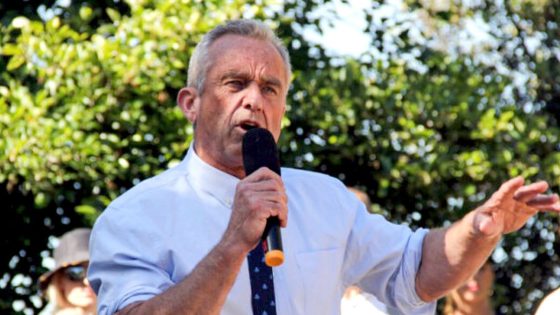Billions of taxpayer dollars earmarked by wealthy nations to “fight climate change” are being spent without oversight or explanation, according to a Reuters report, with some even spent on actual “climate change”.
In 2015, 38 developed countries signed the Paris Agreement in which they pledged $100 billion annually to poorer countries to not only “fight climate change” but to also help mitigate climate-related damage. The money would be used to finance projects like wind farms and sustainable energy sourcing, as well as reconstruction after storms or floods. These projects and expenditures would be reported to the United Nations Framework Convention on Climate Change.
But a report published this month revealed that while some of the money goes to environmental projects, many funds are spent on undisclosed ventures, and still others are spent on initiatives that aggravate “global warming”.
Between 2015 and 2020, developed countries contributed $182 billion towards climate projects. Japan made up the lion’s share, reporting $59 billion in loans, grants, equity investments and other contributions geared towards climate projects.
According to the report — which analyzed only 10% of all contributions — $9 billion of Japan’s reported endowments went to climate changing projects that used coal and natural gas. The country also reportedly has plans to spend $40 million on projects unrelated to climate such as car parks, roads and consulting services.
Governments are also finding ways to include unrelated initiatives in their climate finance reports. The United States, for instance, agreed to lend $19.5 million for a posh hotel project in Cap-Haitien, Haiti. Since the hotel is being designed with protection against storms and hurricanes, the project was counted as part of the US government’s pledge. Italy spent $4.7 million to open a retail chocolate franchise across Asia and reported it as climate related, but did not specify how so.
“This is the wild, wild west of finance,” said Philippines Department of Finance Undersecretary Mark Joven. “Essentially, whatever they call climate finance is climate finance.”
Countries also report ventures that never occur. France earmarked $500,000 for climate initiatives in China, Mexico and Kenya. Even though these projects were later canceled, they remained on France’s report to the UN.
There appears to be no oversight body, either in the respective countries or the UN, which monitors these climate expenditures, and there are no plans to change that.
“Climate negotiators from wealthy countries that oppose stricter rules told Reuters that more restrictions on how funds are spent could limit developing nations’ autonomy in tackling climate change, restrict the flow of money, and hinder the flexibility needed to keep pace with the fast-evolving crisis and the technologies needed to solve it,” reports Reuters.
But while the climate pledges from these wealthy nations may be half hearted, their zeal to “fight climate change” takes on a more serious tone in their home countries.
Many cities in these developed countries are formulating plans to “fight climate change” by mandating diets, limiting clothing purchases, reducing private car ownership, and other measures.
C40 is a network of cities that have pledged to transform their cities to meet the World Health Organization’s Air Quality Guidelines. Cities include Los Angeles, New York City, Washington, DC, Dubai, Mumbai, Barcelona, Paris, London, Tel Aviv, Beijing, Cape Town, Tokyo, and Sydney.
“Mayors of C40 cities are committed to using an inclusive, science-based and collaborative approach to cut their fair share of emissions in half by 2030, help the world limit global heating to 1.5°C, and build healthy, equitable and resilient communities,” says the website.
To meet those guidelines, C40 has adopted a slew of measures such as prescribing a meal plan for residents called the Planetary Health Diet. The diet is limited to 2,500 calories a day and is mostly plant based, with 50% fruits and vegetables and 50% other foods such as whole grains, plant-based protein, legumes, nuts, and small amounts of animal-sourced protein.
“Cities committing to this accelerator will work with residents to achieve a ‘Planetary Health Diet’ for all by 2030, with balanced and nutritious food, reflective of the culture, geography, and demography of their residents,” reads the C40 website.
Other C40 measures include reducing the consumption of clothing and textiles by 39% by 2030, an 18% reduction in electronics and household appliances by 2030, a 26% reduction in aviation by 2030, and a 28% reduction in private transport by 2030. Higher numbers are set for 2050.
C40 mayors are also implementing Zero Emissions Areas, or “clean air zones,” where there are no carbon emissions. In Zero Emissions Areas private car transport is discouraged and residents are pushed to walk, cycle, or ride public transportation.
This is done by reallocating road space and parking spaces to buses, cyclists and pedestrians, as well as “charging drivers to enter a clean air zone” and generally “making private vehicle use more expensive or inconvenient.” All vehicles in these areas must be electric.
In addition to Zero Emissions Areas, C40 cities have pledged to create 15-minute cities, where public services, recreation, schools and work are located within a 15-minute walk, obviating the need to drive.
C40 cities are also committed to constructing “Zero Carbon Buildings”, which means that public and private buildings will be forced to conform to a set of environmental requirements. These include a ban on gas lines and the exclusive use of electric appliances, an initiative which has begun to gather momentum in the United States.




























